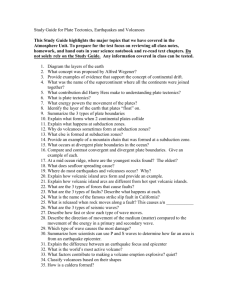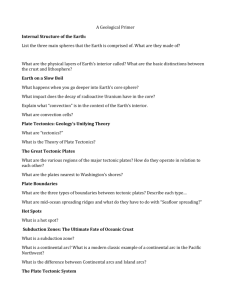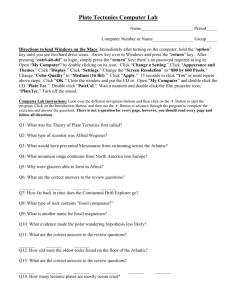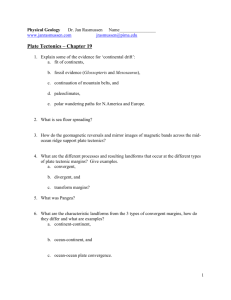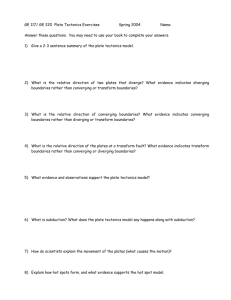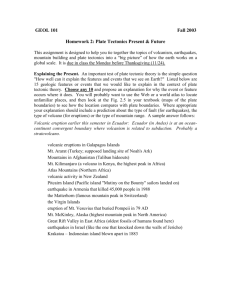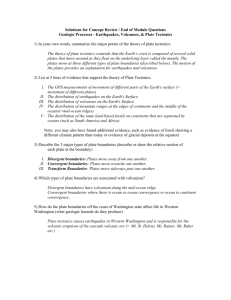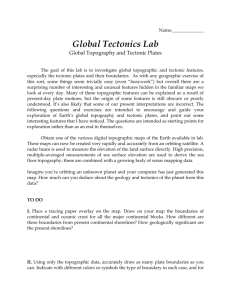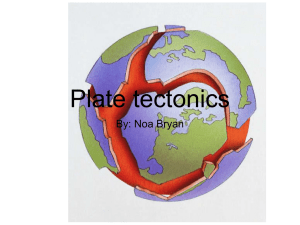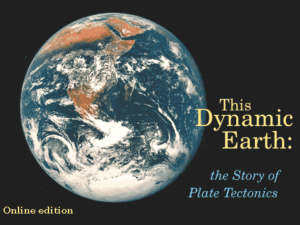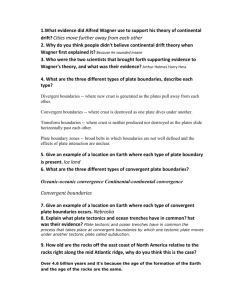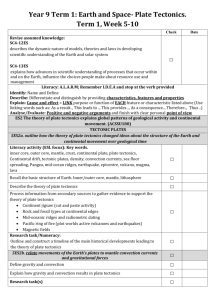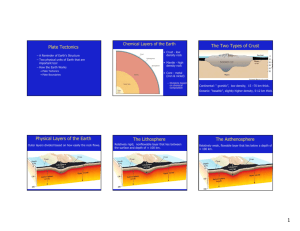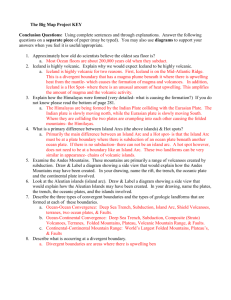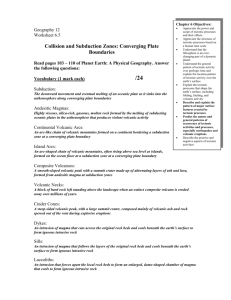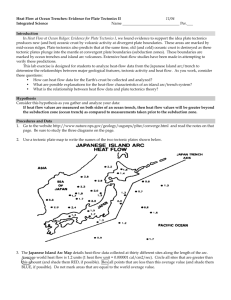Study Guide for Plate Tectonics, Earthquakes and Volcanoes
advertisement
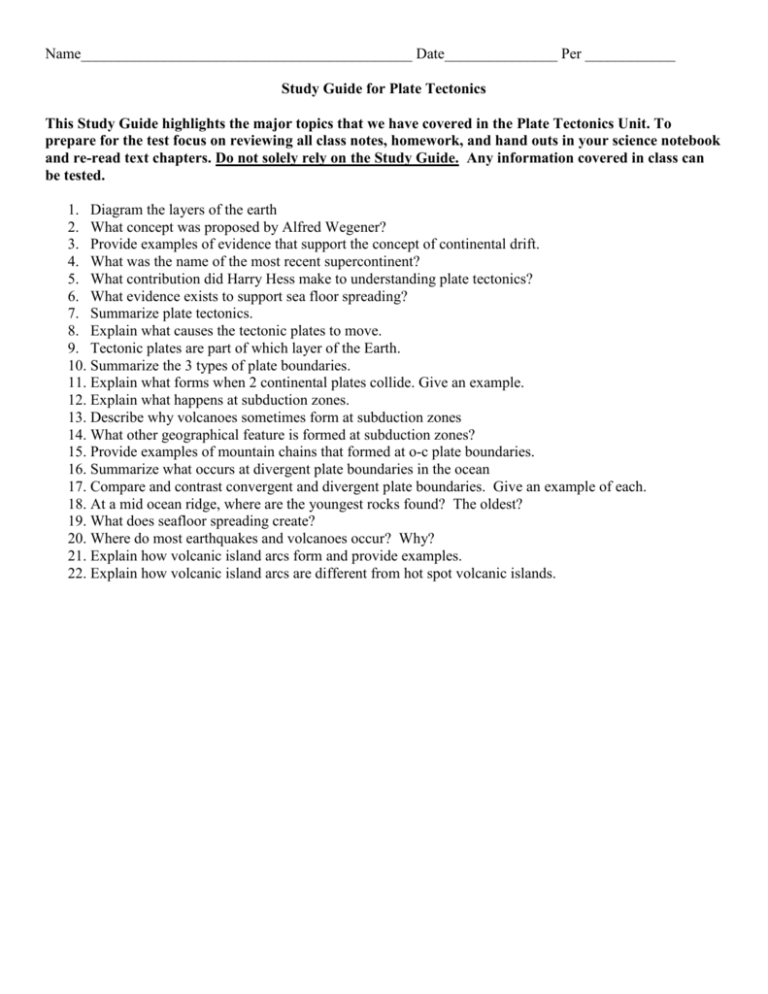
Name____________________________________________ Date_______________ Per ____________ Study Guide for Plate Tectonics This Study Guide highlights the major topics that we have covered in the Plate Tectonics Unit. To prepare for the test focus on reviewing all class notes, homework, and hand outs in your science notebook and re-read text chapters. Do not solely rely on the Study Guide. Any information covered in class can be tested. 1. Diagram the layers of the earth 2. What concept was proposed by Alfred Wegener? 3. Provide examples of evidence that support the concept of continental drift. 4. What was the name of the most recent supercontinent? 5. What contribution did Harry Hess make to understanding plate tectonics? 6. What evidence exists to support sea floor spreading? 7. Summarize plate tectonics. 8. Explain what causes the tectonic plates to move. 9. Tectonic plates are part of which layer of the Earth. 10. Summarize the 3 types of plate boundaries. 11. Explain what forms when 2 continental plates collide. Give an example. 12. Explain what happens at subduction zones. 13. Describe why volcanoes sometimes form at subduction zones 14. What other geographical feature is formed at subduction zones? 15. Provide examples of mountain chains that formed at o-c plate boundaries. 16. Summarize what occurs at divergent plate boundaries in the ocean 17. Compare and contrast convergent and divergent plate boundaries. Give an example of each. 18. At a mid ocean ridge, where are the youngest rocks found? The oldest? 19. What does seafloor spreading create? 20. Where do most earthquakes and volcanoes occur? Why? 21. Explain how volcanic island arcs form and provide examples. 22. Explain how volcanic island arcs are different from hot spot volcanic islands.
